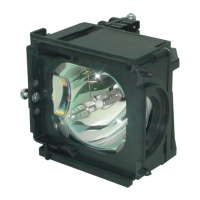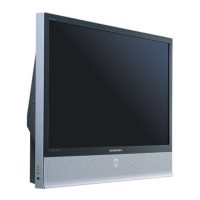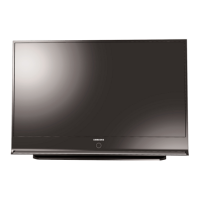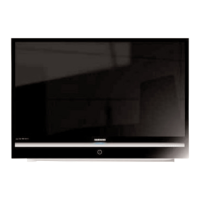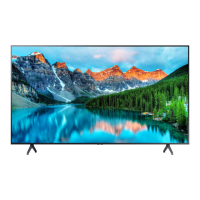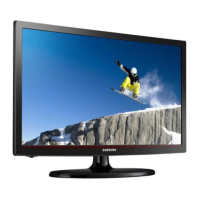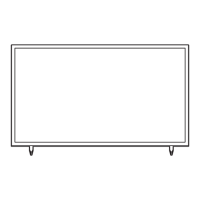Do you have a question about the Samsung HL-S5687W and is the answer not in the manual?
Details SDTV and HDTV formats (480i, 480p, 1080i, 720p) and their quality.
Explains DTV antenna requirements and channel assignments (VHF/UHF).
Guidelines for optimal viewing distance and comfort from the TV screen.
Describes the function of buttons on the TV's front panel for basic operations.
Lists and explains the various input/output jacks on the TV's rear panel.
Covers POWER, VOL, MUTE, SOURCE, MENU, EXIT buttons for primary functions.
Explains CH, PRE-CH, SOURCE, and input mode buttons for navigation.
Guides on connecting VHF and UHF antennas for TV reception.
Instructions for connecting cable TV, with and without a cable box.
Steps to connect a VCR using video/audio or S-Video jacks.
Instructions for connecting a DVD player via HDMI or Component (Y, PB, PR) jacks.
Steps for connecting a DTV set-top box via Component or DVI/HDMI.
Shows how to connect to the TV via HDMI for high definition.
Instructions for powering the TV on and off using the remote or front panel.
Navigating TV settings using on-screen menus and remote control.
Steps to memorize and store available channels for easy scanning.
Explains how to change channels using channel buttons, number buttons, or the '-' button.
Step-by-step guide to manually set the TV's clock.
Guides on selecting input sources like VCR, DVD, or PC using the menu.
Steps to store and find frequently watched channels.
Manually adjusting analog channels for optimal reception.
How to check and improve digital signal reception.
Selecting picture modes like Dynamic, Standard, Movie, Custom.
Adjusting contrast, brightness, sharpness, color, tint, and color tone.
Selecting screen formats like 16:9, Zoom, Wide Fit, or 4:3.
Increasing or decreasing the sound volume using the remote.
Adjusting sound settings like balance and equalizer frequencies.
Accessing and assigning a 4-digit password for parental controls.
Setting restrictions based on TV (FCC) age-based ratings.
Setting restrictions based on MPAA movie rating system.
Using parental restrictions for DTV channels.
How to connect a PC to the TV for display.
Reducing picture noise and aligning the image when using PC input.
Self-adjusting picture quality and position for PC input.
Viewing photos (JPEG) and audio files (MP3) from a USB MSC device.
Displaying JPEG files and folders saved on a memory device.
Displaying MP3 files saved on a memory device.
Information on when and why to replace the lamp, and precautions.
Lists common TV problems and their possible solutions.
Detailed technical data including dimensions, weight, and system compatibility.
| Screen Size | 56 inches |
|---|---|
| Display Type | DLP |
| Resolution | 1920 x 1080 |
| Aspect Ratio | 16:9 |
| Brightness | 1000 cd/m² |
| Contrast Ratio | 3000:1 |
| HDMI Ports | 2 |
| Component Video Inputs | 2 |
| Response Time | 8 ms |
| Viewing Angle | 160 degrees |
| Speakers | 10W x 2 |
| Inputs | HDMI, Component, Composite, S-Video |
